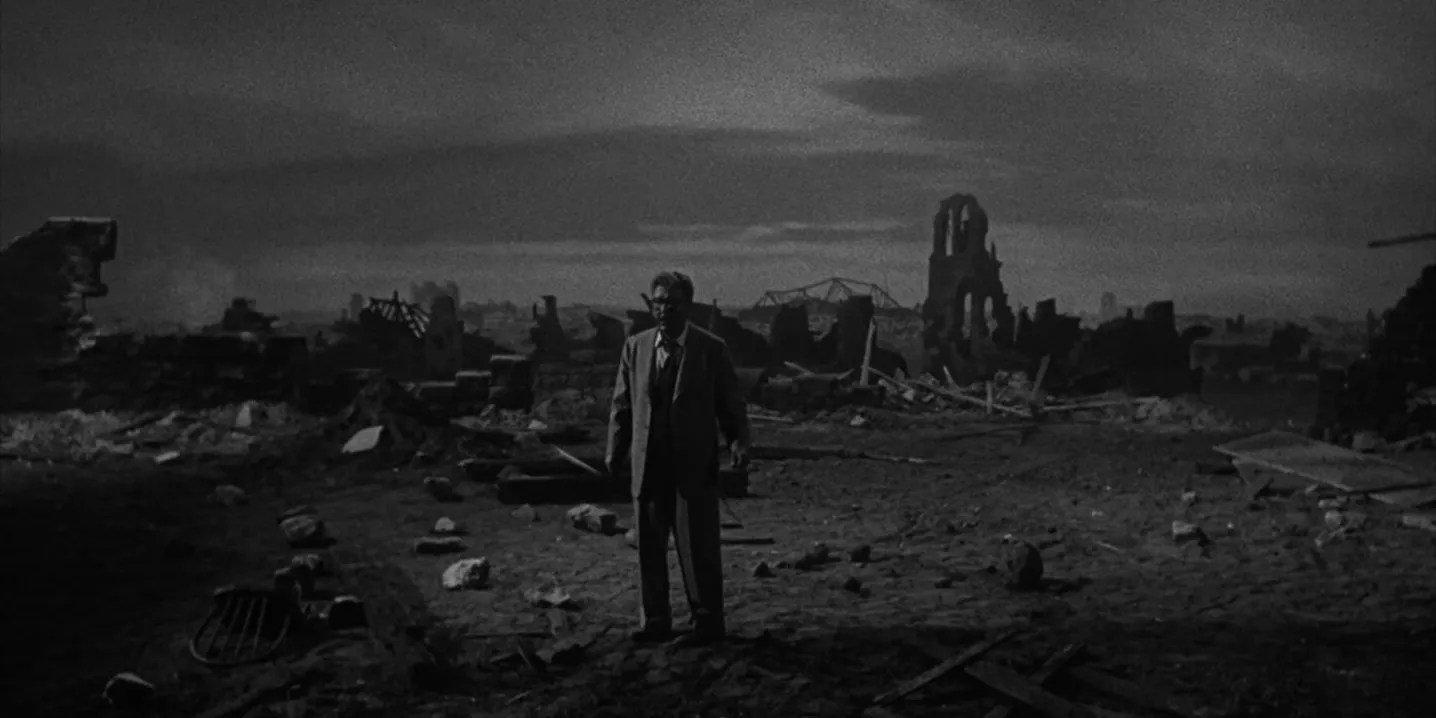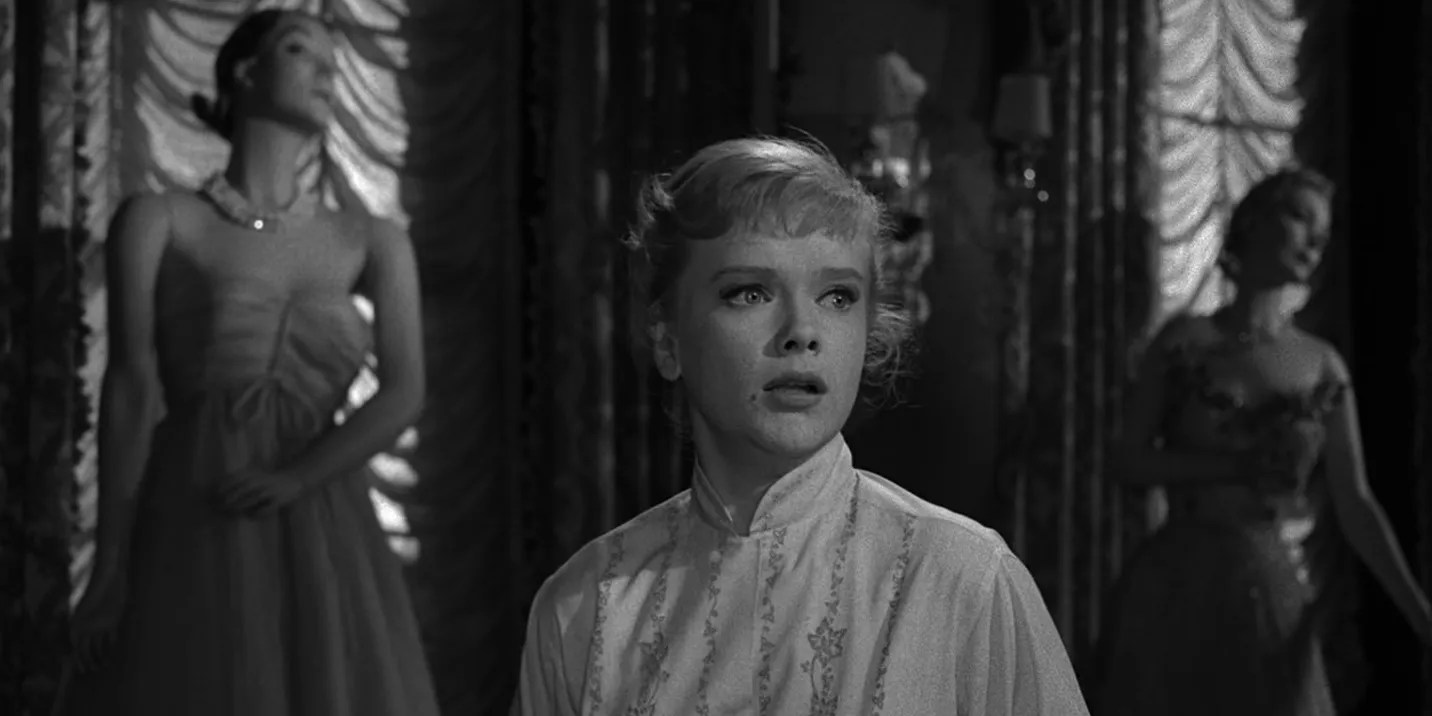Summary
WhenThe Twilight Zonehit screens in 1959, creator Rod Serling led viewers into an uncanny and enigmatic world. Each episode focused on a moral quandary or chilling mystery. Several of the show’s most iconic moments have entered the popular imagination, from the yeti on the wing of the plane in “Nightmare at 20,000 Feet” tothe Red Scare-adjacent hysteriaof “The Monsters Are Due On Maple Street.”
It is a testament toThe Twilight Zone’s consistent quality that many of its episodes continue to fascinate many decades after they were first broadcast. The black-and-white film stock adds to the drama’s creepiness. More importantly, the show’s excellent writing demonstrates that even now, zappy special effects aren’t required to produce memorable and thought-provoking TV.

10"Where Is Everybody?" (Season 1, Episode 1)
The Twilight Zonehits the ground running with its first episode, “Where Is Everybody?” A man arrives in a deserted town with $2.85 in his pocket and no idea who he is. His apparent glimpse of another human being is revealed to be a mannequin; a ringing telephone has no one at the other end; a movie starts to play in a theater with no one in the projection booth. And, through it all, he has the creeping suspicion that someone is watching his every move.
“Where Is Everybody?” is a taut, atmospheric tale of howextreme isolation and confinementtake their toll on the human psyche. The protagonist’s descent into insanity is masterfully handled and, although the twist is a little underwhelming,The Twilight Zone’s debut effort deserves to be remembered as one of its best.

9"Jess-Belle" (Season 4, Episode 7)
Although the majority ofThe Twilight Zone’s episodes made use of a 30-minute runtime, the show’s fourth season experimented with longer installments. Not every episode benefits from the one-hour slot, but “Jess-Belle” makes excellent use of the additional breathing room to tell a rural horror story of thwarted love and jealousy.
The titular Jesse-Belle is a country girl who turns to magic to get her man back. Her spell to recapture his heart is a success, although it comes with uncanny consequences. Each night, she transforms into a leopard, and her metamorphosis slowly robs her of her humanity. “Jess-Belle” combines supernatural tropes witha well-realized love triangle, resulting in a genuinely tense tale of doomed romance.

8"Judgment Night" (Season 1, Episode 10)
Many episodes ofthe Twilight Zonedemonstratehow karma comes back to bitewrongdoers. “Judgment Night” fuses this classic formula with an atmospheric tale of a doomed passenger ship, theQueen of Glasgow. Rod Serling’s script ratchets up the sense of dread as one of the ship’s passengers, Carl Lanser, becomes overwhelmed by a creeping sense of deja vu.
Lanser’s belief that something terrible is about to happen to the ship combines with an oppressive, foggy aesthetic to deliver one ofThe Twilight Zone’s best examinations of guilt. The protagonist’s horrified realization about why he is aboard theQueen of Glasgowis both dramatically and morally satisfying, while his resulting punishment is chilling to witness.

7"The Hitch-Hiker" (Season 1, Episode 16)
The classic episode “The Hitch-Hiker” began life as a radio drama, with entertainment heavyweight Orson Welles playing the tale’s main character. However,The Twilight Zone’s take on the story gave viewers a female protagonist, Nan Adams, who is the lucky survivor of a car accident.
Yet all is not as it seems. As Nan continues on her journey, she repeatedly encountersa mysterious hitchhiker. Despite her attempts to tell him otherwise, the titular hitchhiker is convinced that he and Nan are destined for the same place. “The Hitch-Hiker” is a classic tale of trying to cheat fate, and it makes for one of the show’s best episodes.

6"Come Wander With Me" (Season 5, Episode 34)
While many fans considerTheTwilight Zone’s fifth season to be its weakest, it still contains well-known classics and hidden gems. The wonderfully spooky “Come Wander With Me” falls into the latter category. Thisslice of folk horrorsees a songwriter visit a rural community in the hope of finding his next hit record.
While some episodes ofThe Twilight Zonebludgeon viewers with their messages, “Come Wander With Me” takes a more ambiguous route. It’s a creepy, mysterious, and often thought-provoking half-hour of television that benefits from repeat viewings. Like its rustic setting, “Come Wander With Me” is a little off the beaten path, but it’s worth checking out.

5"The Midnight Sun" (Season 3, Episode 10)
Whilecatastrophic climate changemight feel like a contemporary concern,The Twilight Zoneexamined the phenomenon all the way back in 1961. “The Midnight Sun” depicts the consequences of rapid global warming as the Earth, knocked from its orbit, slowly approaches the sun.
This apocalypse scenario is seen through the eyes of Norma, a young artist who tries to make sense of the situation by painting it. However, her attempts are foiled when her artworks literally melt in the extreme heat. While its twist ending is a little counterintuitive, “The Midnight Sun” is a must-see episode ofThe Twilight Zone.

4"It’s A Good Life" (Season 3, Episode 8)
Things are not always as they seem inThe Twilight Zone. The undisputed classic “It’s A Good Life” introduces viewers to a monster in an unexpected form. Young Anthony Freemont is a tyrant whose wishes come true. He uses this power to terrorize the local adults, with grisly results.
“It’s A Good Life” is one ofThe Twilight Zone’s best known installments for a reason. Its was retold in 1983’sTwilight Zone: The Movie, sequelized in the 2002 iteration ofThe Twilight Zone, and parodiedby shows includingThe Simpsons. A chilling central performance from Bill Mumy means that viewers are likely to sympathize when one of his victims proposes infanticide to deal with the monstrous child.

3"Time Enough At Last" (Season 1, Episode 8)
Most people are familiar with the feeling that there aren’t enough hours in the day to play new games or to stream the latest shows. This is a problem shared by the bespectacled Henry Bemis, an avid reader whose bookworm sensibilities bring him into conflict with his overbearing wife.
By chance, Bemis survivesa nuclear exchange. He learns that he is alone in the wasteland; at last, there is no one to interrupt his reading. However, he learns that solitude has its drawbacks.The Twilight Zonecan often be terrifying, but “Time Enough At Last” is a classic example of how the anthology series can also tug at viewers' heartstrings.

AlthoughThe Twilight Zonefirst aired a decade and a half after the conclusion ofthe Second World War, the conflict cast a long shadow over the supernatural anthology series. This is unsurprising, considering Rod Serling was a paratrooper in the Pacific Theater. However, “Deaths-Head Revisited” chooses to explore the horrors of the European Theater, with a particular focus on the Holocaust.
The episode sees an SS officer return to the abandoned Dachau concentration camp, where he reminisces about his wartime experiences. However, he is soon confronted by the ghosts of those he tormented, resulting in a shocking if justified punishment. “Deaths-Head Revisited” reminds viewers that, whileThe Twilight Zoneis full of terrors, the real world can be just as twisted.

1"The After Hours" (Season 1, Episode 34)
The Twilight Zonedemonstrates a fascination with objects that fall within the uncanny valley: ventriloquist dummies, lifelike robots, and, in the case of “The After Hours,” shop floor mannequins. The episode focuses on a woman’s visit to a department store. Her search for the perfect gift takes her into uncharted territory — and up to the store’s hidden ninth floor.
“The After Hours” is regarded as one ofThe Twilight Zone’s best installments. Protagonist Marsha’s path from paranoia to self-acceptance is skillfully handled thanks to a strong performance from Anne Francis and inventively creepy set design. The episode was remade in the 1980s withStar Trek’s Terry Farrell; however, this second attempt is a pale imitation of the original, which still has the power to shock and unnerve.